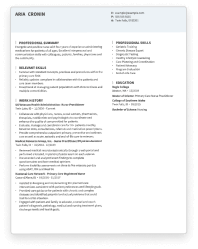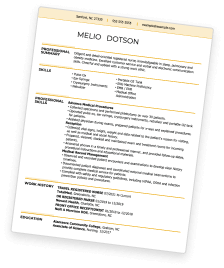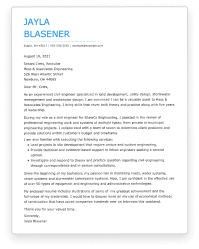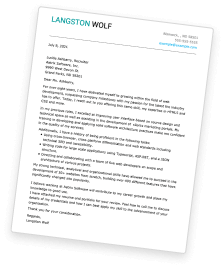Data Analyst Resumes: Overview
As a data analyst, you play a crucial role in modern businesses, helping organizations make informed decisions based on data-driven insights.
Data analysts collect, process, and analyze data to provide valuable information for decision-makers. Many companies need data analysts like you on their teams, which means you can work in a variety of settings, such as:
- Corporate Offices
- Consulting Firms
- Government Agencies
- Research and Academic Institutions
- Start-ups
You need more than a love of numbers to thrive as a data analyst. Strong analytical, statistical, and technical skills are a must. Proficiency in data visualization, data querying, and familiarity with various data analysis tools are also essential.
Are you ready to build a resume that kickstarts your data analyst career? Explore our professional examples, and downloadable templates to create a resume that showcases your data-driven expertise.
We can help you get the data analyst job you’ve been dreaming of. Keep reading to find a resume design that works best for you, and learn how to showcase your skills and experience to stand out from the competition!
Data Analyst Resume Example
This first example of a data analyst resume will catch the attention of hiring managers. Its chronological format is perfect for a data analyst with extensive experience. Here’s what we like about it:
Eye-Catching Design:
This resume’s layout and use of color is visually appealing, making it easy for recruiters to navigate and find key information. As a data analyst, visualizing data is essential, and creating an attractive resume is no different!
Metrics that Matter:
This data analyst’s resume includes specific metrics and achievements, such as “Mapped 60% of current business and operational processes and recommended areas for improvement,” demonstrating their impact in a previous role. Quantifying accomplishments with numbers and percentages is a great way to validate your qualifications.
Well-Organized:
This resume uses a chronological format to emphasize the data analyst’s work experience while providing ample space for showcasing skills and certifications. The design features colored headings to make the resume especially easy to read and uses whitespace to avoid looking overcrowded.
Well-written Summary:
The professional summary is concise but also persuasive. The candidate introduces themselves using descriptive words like “motivated and result-driven” to create a solid first impression. Then, they emphasize their expertise in analysis by highlighting their skills and qualifications.
This resume is an excellent example for data analysts aiming to impress potential employers. It demonstrates the power of a well-structured, achievement-focused resume. Use this example as a model for your own resume, or simply use this template to get started!
Data Analyst Resume Sample
This second example of a data analyst resume stands out from the competition. A combination format is a great way to emphasize skills and provide work history. It works well for data analysts with limited work experience. Here’s what makes it work:
Striking Layout:
This data analyst’s resume design immediately grabs attention by using color and clearly labeled sections. Using bold colors to highlight the candidate’s name makes a strong impression.
Highlights Skills and Qualifications:
This data analyst’s resume uses a combination format to emphasize skills and qualifications rather than work experience. Including both a Summary of Skills and Key Skills section allows the candidate to bring attention to their impressive abilities by including technical skills and soft skills to illustrate their value.
Detailed Work Experience:
Although this example has just four years of work experience, the candidate emphasizes the knowledge they gained in each position. Using numbers and percentages demonstrates the impact of their work, and each bullet showcases their value as an employee.
Action Verbs:
This resume example engages the reader using action verbs like researches, synthesizes, supported and built. Using action verbs is the key to writing a great resume that gets attention.
This data analyst’s resume is an excellent example for anyone looking to get noticed by hiring managers. If you are looking for a resume that makes an impact, this template is a great choice!
Data Analyst Resume Example: Getting Started
Writing a great resume for a data analyst job starts with knowing a resume’s key components. If you aren’t sure where to start, don’t worry, we’ve got you covered! Our step-by-step guide will show you how to create a resume outline that makes your skills and experience shine!
The first step to creating a great resume is to choose a format suited to your experience level.
If you have 10 or more years of data analysis experience, a chronological resume will showcase your work history and expertise. It is also important to note that many applicant tracking systems expect resumes to be in a chronological format, so it can be the best choice if you submit your resume digitally.
However, if you are new to the career, use a functional resume to emphasize skills rather than experience. A functional resume is best suited for someone who has just graduated or recently started their career.
As the name suggests, a combination format mixes elements of both and is an excellent choice for someone with mid-level experience or who is making a career transition. It lets you emphasize your skills and still include your work experience.
How To Write A Data Analyst Resume
Learn how to write the best resume possible for your next data analyst position by following a few key steps in the writing process!
Contact Information
Once you have chosen a format, you will add your contact information first. List your:
- full name
- phone number
- email address
- location (city and state)
If you have a LinkedIn, you can also provide it as well. Just make sure your contact information is at the top of your resume, and always be up-to-date.
Resume Summary or Objective
Next, you will craft a compelling resume summary or objective statement that provides a snapshot of your most relevant qualifications as a data analyst.
If you are new to data analysis, an objective statement is best for conveying your passion for the job and your career goals. However, if you have relevant work experience, a professional summary will highlight your skills and experience.
Whether you choose a resume summary or objective, it should be concise– no more than 2-3 sentences long. Tailor this section to the specific position you are applying for by focusing on skills and experience that align with the job description.
Work History
Detail your relevant work experience, starting with the most recent position. Include your job title, name of employer, location and the dates you were employed. Then, under each entry, use three bullet points to describe your most relevant experience, responsibilities and achievements in each role.
As a data analyst, you know the power of numerical data! With that in mind, use numbers and percentages to validate your impact. Rather than simply stating that you “resolved data integrity issues,” you could say, “resolved 75% of issues regarding the integrity of data flow into the database.”
Skills
Include a skills section highlighting your hard and soft skills. Technical skills like software proficiency, process mapping and Excel modeling are essential. If you have specific skills mentioned in the job description, include them in this section.
Even though technical skills are vital to a data analyst position, you should also include soft skills such as communication, time management and teamwork to demonstrate your ability to work well with others.
Education
Include your educational background, including degrees, institutions, and graduation dates. If you still need to complete your degree, you can also include coursework you have completed that is relevant to the position.
Additional Sections
Consider adding sections that strengthen your resume if space allows. Some optional sections to consider include:
- Certifications
- Industry Affiliations
- Languages Spoken
- Awards
Still have questions? Check out our comprehensive guide to writing a resume for more help! Otherwise, keep reading for tips and examples to create a winning resume.
Key Skills For Data Analyst Resumes
You will need a blend of hard and soft skills for a successful career as a data analyst. Hard skills are the technical abilities you need to perform your job effectively, while soft skills contribute to your interpersonal and problem-solving capabilities.
Including the right skills on your resume will show hiring managers you are serious about getting the job. You should tailor your skills section to each job you apply for by aligning it to the job description.
Incorporating these key skills into your data analyst resume increases your chances of landing an interview.
To help you get started, we’ve compiled a list of the top hard and soft skills employers look for in a data analyst!
Top 5 Hard Skills for Data Analysts
- Data Analysis: A crucial technical skill, data analysts must excel in collecting, processing, and interpreting complex data sets to extract meaningful insights for decision-making.
- Data Visualization: Proficiency in data visualization tools and techniques, such as Tableau or Power BI, is crucial to present your findings effectively.
- Statistical Analysis: Strong statistical skills, including regression analysis and hypothesis testing, are fundamental for deriving accurate conclusions.
- Data Querying: Proficiency in SQL and other data querying languages are great computer skills that enable data analysts to retrieve and manipulate data efficiently.
- Machine Learning: Familiarity with machine learning concepts and tools is valuable for creating predictive models and enhancing data analysis.
Top 5 Soft Skills for Data Analysts
- Communication: Effective communication skills are essential for explaining complex data findings to non-technical stakeholders.
- Problem-Solving: Data analysts often face intricate data challenges that require creative problem-solving and critical thinking.
- Attention to Detail: Meticulous attention to detail is necessary to ensure data accuracy and reliability in analysis.
- Teamwork: Collaborative skills are crucial for working with cross-functional teams and sharing insights.
- Adaptability: The ability to adapt to evolving data tools and technologies is essential to stay current in this dynamic field.
Top Certifications for Data Analysts
Including relevant certifications on your resume shows your commitment to sharpening your skills and validates your qualifications. Here are just a few examples of certifications available to data analysts:
- Certified Analytics Professional (CAP): The CAP certification demonstrates your analytics and data-driven decision-making expertise.
- Microsoft Certified: Azure Data Scientist Associate: This certification validates your skills in using Azure tools for data science tasks.
- Tableau Desktop Specialist: As a data analyst, becoming a Tableau Desktop Specialist showcases your data visualization expertise.
- Google Data Analytics Professional Certificate: This certificate program from Google provides hands-on experience with data analysis tools and can boost your credibility.
- SAS Certified Data Scientist: SAS is a leading analytics software, and this certification reflects your proficiency in its use.
8 Tips For Writing a Data Analyst Resume
1) Customize for the Job: Tailor your resume to each specific data analyst position you apply for. Use keywords from the job description to pass initial screenings by hiring managers or applicant tracking systems. For example, if the job description includes creating and presenting reports and dashboards, include any related experience you have doing that in your work history section.
2) Highlight Accomplishments: Focus on your achievements rather than just listing job duties. Focus on qualifications that bring value to potential employers. Use your knowledge of numbers and statistics to make your resume stand out! Quantify achievements with numbers and percentages as much as possible.
3) Use Action Words: Start bullet points with action verbs like “analyzed,” “optimized,” and “implemented” to make your experience more engaging. Action verbs will make your resume content more interesting to the reader.
4) Be Clear and Concise: As a data analyst, you will gather large amounts of data and process that information into concise reports about key findings. Writing your resume can be a very similar process! Keep your resume brief and well-organized to ensure recruiters can quickly identify key information. Ideally, your resume should be kept to one page. If you have extensive work experience, a two-page resume is acceptable.
5) Emphasize Data Tools: Mention the data analysis tools and software you’re proficient in, such as Excel, Python, or Tableau. If the job description includes data tools you have experience using, be sure to mention that in your skills section, where hiring managers will find it easily.
6) Tailor Your Skills: Align your skills with the job description to demonstrate your relevance to the specific position. Remember to include soft skills as well as technical skills to demonstrate your ability to work well with others. Highlighting your ability to collaborate, communicate and problem-solve will make you stand out from other data analysts.
7) Include Relevant Certifications: Showcase your data analysis certifications to validate your expertise. Pursuing professional certifications shows that you are committed to staying current with technology and skills and validates your qualifications as a data analyst.
8) Proofread: Always make sure your resume is free of errors. Data analysis is very detail-oriented, so even a small typo can hurt your chances of getting the job.
Helping Job Seekers Like You


Save Time With Hloom's Resume Builder
Key Takeaways
- Customize your resume for each job application, focusing on the most relevant skills and experience.
- Emphasize quantifiable achievements, and use numbers or percentages to highlight your impact.
- Use action words to create an engaging resume demonstrating your skills and experience.
- Maintain clarity and conciseness in your resume to make it recruiter-friendly.
- Showcase your proficiency in data analysis tools and software by including relevant professional certifications.
Save Time With Hloom's Resume Builder













